MARKETING
21 Digital Marketing Tools You Need When Starting a Business

Did you know there are more than 30 million small businesses in the United States alone?
With a number like this, small business owners need a competitive edge. If you are building a business, chances are you’re looking for ways to get your leg up on the competition. To accomplish this, you’ll need a good marketing strategy and access to the best digital marketing tools.
In this post, I’m going to outline 21 digital marketing tools you need when starting a business. You may be familiar with a marketing tool or two in here; others might be new to you.
From simplifying your social media marketing efforts and project management to finding freelancers, each of these tools will help you get the competitive edge you’re after.
Are you ready to grow your business with digital marketing?
Then let’s begin.
Get this: email marketing is used by eight out of ten marketers.
This isn’t something you should wait on. Instead, you should implement an email marketing strategy on day one.
With more than 12 million customers, MailChimp has claimed its spot as one of the top email marketing providers and digital marketing tools in the world.
While there are alternatives, this tool remains one of the best, for many reasons:
- History dating back to 2001, well before most companies began using email marketing
- Self-service support options, ensuring that you can quickly find answers to all of your questions
- Free plan for those with less than 2,000 subscribers and those who don’t send more than 12,000 emails per month
When starting a business, it’s not likely that you will have more than 2,000 subscribers. For this reason, you can get started with MailChimp early using the tool for free as you get your feet wet with email marketing and then move to a paid plan as you scale.
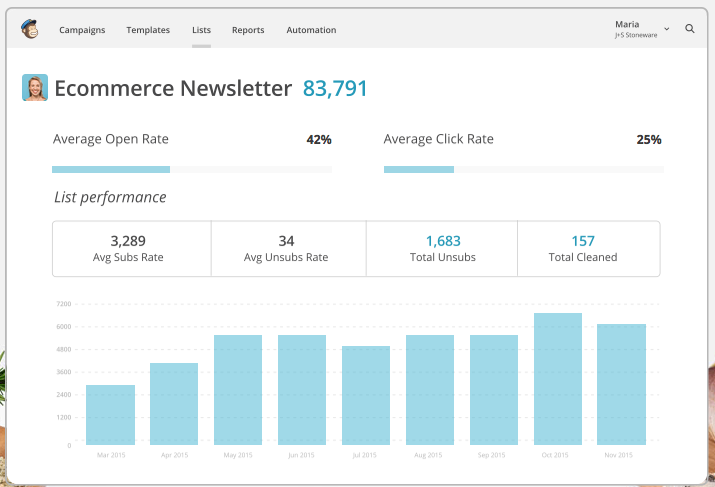
When it comes to marketing, sales, and CRM software, HubSpot has become one of the top players.
For the sake of this post, let’s focus on its marketing software solutions. The company has this to say about this digital marketing tool:
From attracting visitors to closing customers, HubSpot brings your entire marketing funnel together.
You know just how important it is for your marketing funnel to be in good working order. With this software, you have access to tools that help with:
- blogging
- SEO
- social Media
- website
- lead management
- landing pages
- calls-to-action
- marketing automation
- analytics
There is no stone left unturned, when you rely on HubSpot’s all-in-one marketing software.That’s why it’s a top choice for those who are starting a business.
With everything you need in one place, you don’t have to pull yourself in many different directions. This will help you to find success in the early days and help you as you grow.
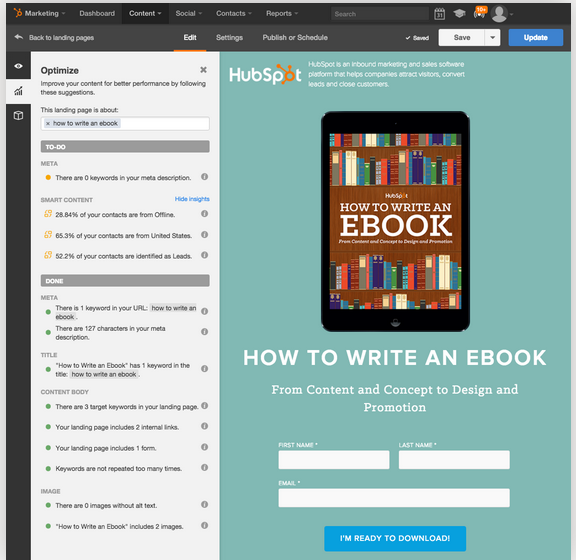
Trello is a digital marketing tool that helps you to manage projects and stay on the same page as your team–a sound digital marketing practice if you want to save time and frustration.
For example, you can share blog posts on Trello before you publish them. This gives others on your team the opportunity to review the post, weigh in with their thoughts and make changes that could strengthen the piece before it goes live.
In the past, before the days of Trello and similar programs, email was the best way to collaborate with your team. While this is still helpful, to a certain degree, it can lead to confusion, missed messages, and frustration.

With Trello, everything related to your online marketing strategy can be shared in the same place. It only takes a few minutes to set up a board. Even better, you can quickly invite your entire staff, all of whom can jump in on the action without delay.
Trello isn’t the only digital marketing tool of its kind, but it’s, by far, one of the best. When it comes to collaborating with others regarding marketing tasks, this tool is hard to beat.
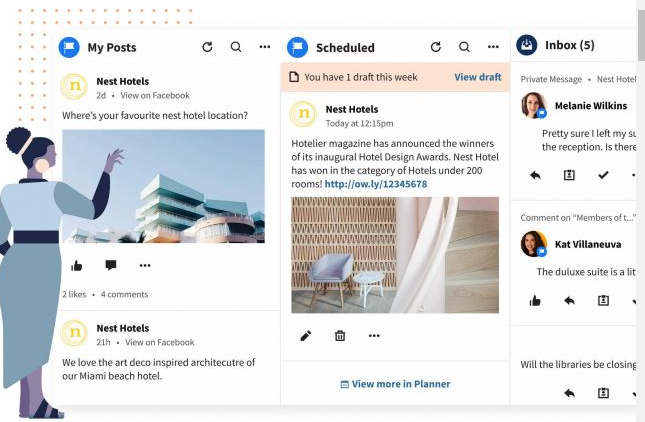
Social media plays a big part in the success of any company, regardless of size, age, or industry. In fact, I’d argue that social media marketing is a must to thrive in this digital era.
Digital marketing tools like Hootsuite allow you to schedule social media posts in advance, thus saving you loads of time.
Hootsuite offers tons of features to help you grow your business. For example, you can:
- Identify influencers for your marketing team and leads for your sales team
- Reply to comments and mentions through the dashboard–there’s no reason to visit each individual platform
- Take advantage of pre-written responses
- Schedule posts when your audience is most active (even if you’re asleep!)
Social media marketing is not as difficult as it sounds, especially when you rely on tools like Hootsuite. With this particular tool, you can schedule and manage social media profiles for more than 30 platforms.
Imagine doing this by hand, without a central dashboard to guide you. It would be enough to frustrate even the most experienced entrepreneur, let alone a new business owner. Let Hootsuite take over like the social media marketing manager it is.
As one of the top free tools from Google, Analytics should be part of your digital marketing strategy from the very start. In fact, I’d argue it’s one of the most powerful digital marketing tools out there.
It only takes a couple of minutes to add the Analytics code to your website, giving you the ability to track every action by every visitor.
This is considered by many to be nothing more than a traffic tool, but it can actually have a big impact on your marketing strategy, if you know what you’re doing.
Take, for example, the ability to see where your traffic comes from:
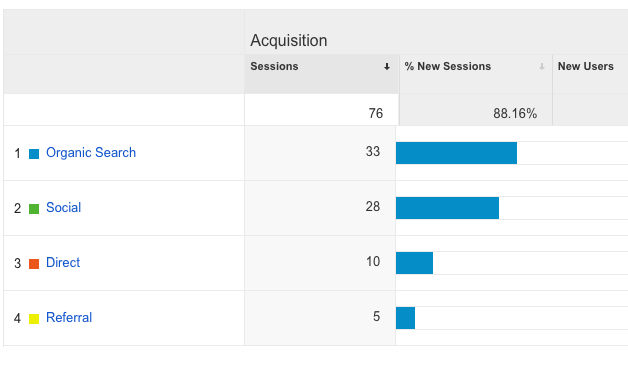
Maybe you realize that a particular social media campaign is driving tons of traffic to your website. With this data, you can adjust your future strategy, in an attempt to capture the same results.
Or, maybe you find that a particular set of keywords is doing wonders for your organic traffic. Again, you can turn your attention to these keywords, ensuring that you keep these in mind as you create content down the road.
Google Analytics isn’t one of those digital marketing tools you can ignore. Installing this early on is a key decision, in regards to your digital marketing strategy. The data you can collect is extremely valuable.
The tagline of this digital marketing tool says it all:
Track, analyze and optimize your digital marketing performance. See what’s working and what’s not, across all campaigns, mobile and web.
It’s good that you want to spend so much time on digital marketing in the early days of your business. But, do you really want to make decisions that aren’t having an impact?
You need to track and analyze every move that you make, as this is the only way to focus on the tactics that are providing the best return on investment (ROI).
With KISSmetrics, you can easily see what’s working and what’s not, across all of your campaigns.
Take, for example, its Analytics products. With a funnel report, you can see if there are any “leaks” in your business. Here’s a screenshot of what to expect:
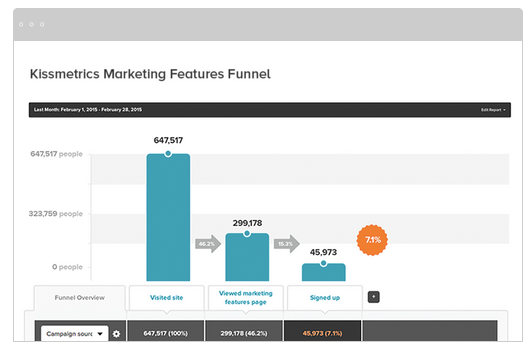
Starting at $120/month, KISSmetrics isn’t the cheapest digital marketing tool on this list. Even so, it’s one that you’ll want to think about, as your business gets up and running.
With a variety of products at your fingertips, the insights you receive will be invaluable to your company’s growth.
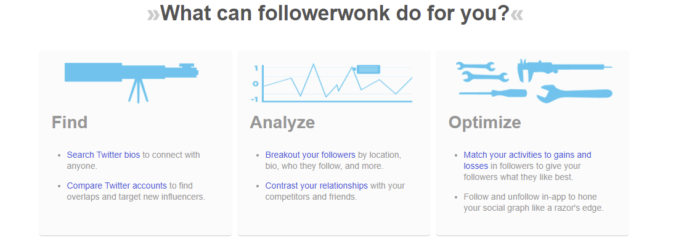
Do you plan on spending a lot of time on social media marketing?
While this is a great way to engage your audience and send traffic to your website, it’ll only work in your favor if you have a solid plan in place.
Tools, such as Followerwonk, are designed to help you improve your social media marketing strategy, such as by digging into your Twitter analytics data.
I included this digital marketing tool on the list for two reasons: it’s easy to use and it’s extremely effective.
Followerwonk breaks down its service into three distinct categories:
- Find: Use the tool to search Twitter bios and compare accounts.
- Analyze: Breakdown your follower list by bio, location, who they follow, and many other criteria.
- Optimize: match your strategy to follower gains and losses, to understand what type of content performs best.
The only downside of Followerwonk is that it can’t be used with other social media platforms, such as Facebook, Instagram and LinkedIn. However, if you have big plans for Twitter, this is a digital marketing tool you should use often.
Even though you may not use it on a daily basis, it can come in handy from time to time. After all, it’s imperative that you understand your audience.
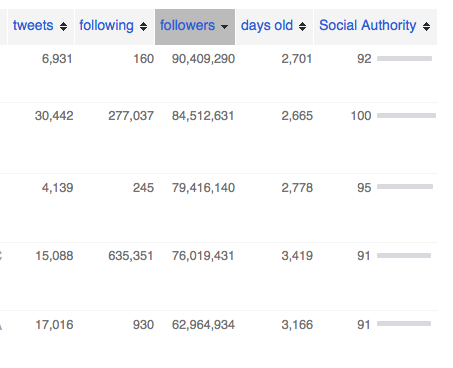
If WordPress is your content management system (CMS) of choice, you shouldn’t hesitate to install the All in One SEO Pack plugin.
A big part of your digital marketing strategy should be based around search engine optimization (SEO) and this digital marketing tool will ensure that you always make good decisions regarding your content and its appeal to search engines.
Some of the top features of the plugin include:
- XML Sitemap support
- Advanced Canonical URLs
- Automatic generation of META tags
- Compatible with most other plugins
- Automatically notifies major search engines, including Google and Bing, of any site changes
Even though all of these features are exciting, it’s something else that has made it one of the most popular WordPress plugins of all time: its ease of use.
Here’s a screenshot, showing a small portion of the tool’s back end:
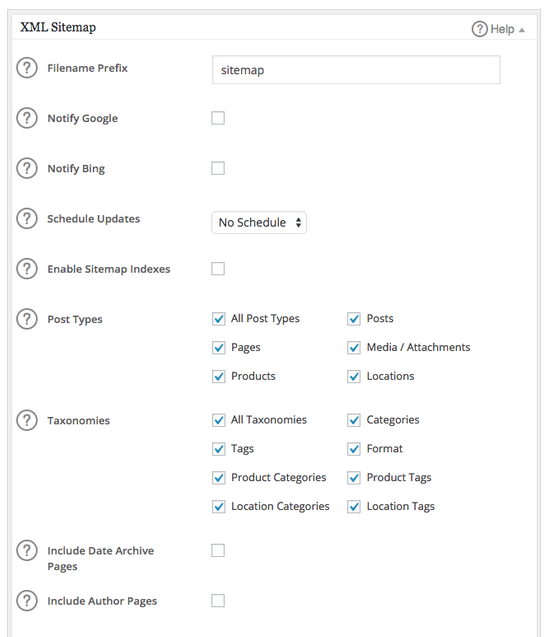
You don’t have to make many decisions in order to get started. And, if you’re ever confused as to what you should be doing, there is help to be had. All you have to do is click the “?” symbol and you’re provided with more information and advice.
The All in One SEO Pack plugin has more than a million active installs. You won’t have to look far to find competitors, but there’s a reason why so many people use this digital marketing tool.
Not only is it free and simple, but it’s results can’t be denied. It will definitely help your website from an SEO perspective, which is something all new businesses need.
BuzzSumo is a big deal for people who need to learn more about their market.
When you start a business, it’s safe to say you know a thing or two about your industry and primary competitors. But, once you dig around more, you’ll find that there is tons of data you can use to your advantage.
If you want to better understand your competition or if you want to learn what type of content performs best with search engines and your audience, you don’t need any other digital marketing tool by your side.
A BuzzSumo search results page looks something like this:
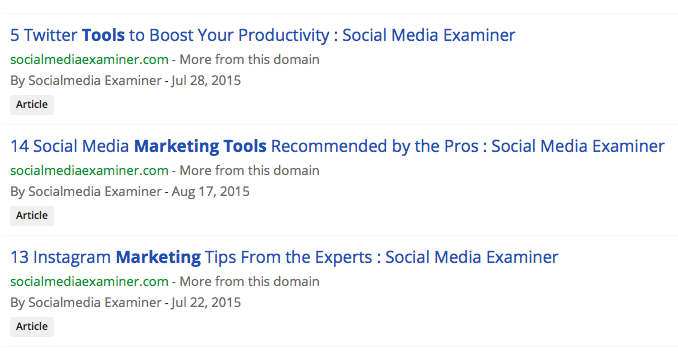
Additionally, there is high level data associated with each result:
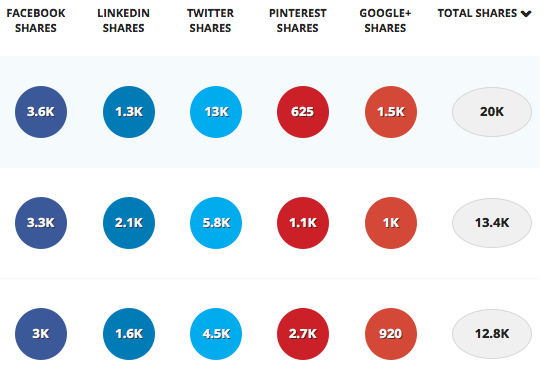
This information can come in handy at many times, such as when you are creating content for your blog.
Why guess as to what is performing best in your niche? You can use BuzzSumo to answer this question with 100 percent accuracy.
With this search, you see that the top result has approximately 20k social shares. You now know what to strive for, if you want to achieve the same level of success.
As a big fan of BuzzSumo, this is a ditial marketing tool that I use on a regular basis. Even if you don’t do much with the data at first, each search will help you to better understand your competition and target audience.
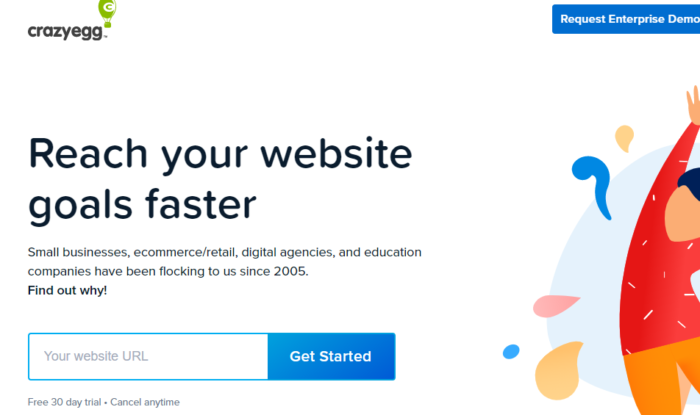
Do you ever find yourself asking this question: what’s working and what’s not about my website?
This is where Crazy Egg can step in and provide assistance.
There are two keys here:
- You can use Crazy Egg to make website changes that generate better results.
- You don’t need much, if any, IT help to get started.
When you’re new to your business, you don’t want to spend countless hours dealing with IT issues. Unfortunately, this often happens when it comes to split testing. Unless you use Crazy Egg, of course.
The tool is packed with features, such as:
- heatmaps and mouse recording
- analysis and reporting
- platforms and integrations
- targeting and personalization
- research and user feedback
A tool that helps you understand what your website visitors like and don’t like, so you can maximize your sales and leads, means that you have to give Crazy Egg a try. It’s one of those digital marketing tools that you don’t know you need, until you use it one time.
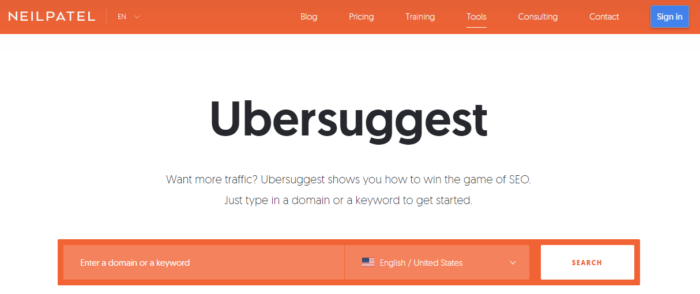
Not only is keyword research a challenging task, but it can also get expensive with the price of premium keyword research tools. Your typical free software won’t offer you much but UberSuggest isn’t your typical free software.

As a whole, this digital marketing tool is easy for beginners because the dashboard is simple to navigate so you can quickly find the data you want. You’ll start by entering a root keyword or domain that you want to research. You get up to three free searches per day on the free version and you can upgrade to a paid software as well.
UberSuggest provides useful keyword information such as total search volume, difficulty, and paid difficulty if you’re thinking of running an ad campaign around that keyword.
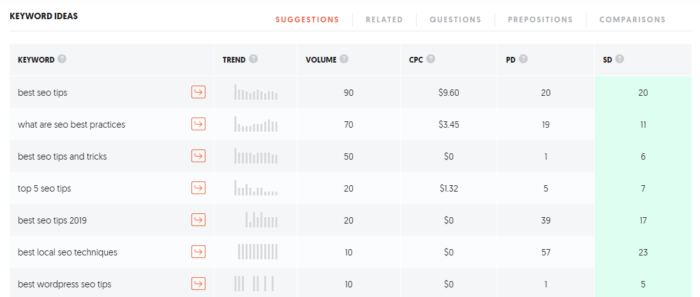
As you work your way down you’ll see historical data that will show you how that keyword has trended over time. This is helpful for determining seasonal keywords or ones that are popular now but may die off over time.
You also get keyword ideas and suggestions that are relevant to the one you’re searching for so you can update older content or develop a content marketing plan.
Overall, UberSuggest is an amazing free keyword research tool that is a great choice for beginners and has enough value as a paid tool for those who are scaling as well.
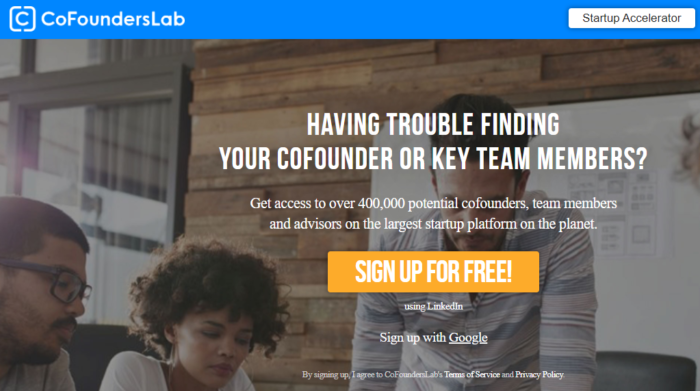
CoFoundersLab is a great digital marketing tool for small businesses that are growing but need a little help to take things to the next level. It uses AI to help you find a cofounder, additional member, or advisor based on a certain set of criteria.
The best digital marketing tools make life easier. CoFoundersLab intends on helping to create a large ecosystem of business owners, entrepreneurs, consultants, and advisors so it’s that much easier to find whatever you need at the current stage in your business.
For example, you can search for someone with a specific skill and find them instantly without having to post on job boards, conduct interviews, and do onboarding. If you’re looking for an SEO content creator, you’ll simply fill out that set of criteria and be instantly connected to someone who can fill that role.
It’s similar to other freelancing platforms out there, but what separates CoFoundersLab is you can find someone who is on the same level. If you’re looking for someone to financially back your business or simply support you equally in your venture, this might be the place to do it.

When it comes to must-have digital marketing tools, Adobe Sign more than makes the cut. It’s a cloud-based e-signature service that helps you use less paper, save time, and get signatures using an automated signature system. You can send documents, sign, and manage the whole process via desktop or mobile device.
There are also integrations to keep records of all the signatures you’ve received so you can reference back if you lose something important.
This simple but useful tool solves a major problem that a lot of businesses have. More and more people are working remotely and may not have access to printers and scanners. This creates delays in your workflow and can frustrate customers if you’re unable to get them what they want because you’re waiting on signatures and approvals.
Adobe Sign is also usable from anywhere on any device. Someone can be on their way to a meeting in the car and sign on their mobile device using their fingertip. No need to print anything, scan, fax, anything. It’s completely digital, safe, and secure.

DropBox is an essential piece of the modern digital business. It allows all the working pieces of your business to come together in one place to eliminate clutter and save time looking for things.
Organization is the key to a successful business, and downloading and sharing files simply doesn’t cut it anymore. With people working from home, you can’t have everyone downloading personal company files onto their computers, misplacing them, or potentially abusing them.
DropBox prevents this from happening by being a totally cloud-based document sharing platform that allows you to set permission levels so certain people can only see what they need to.
You can also connect other tools like Slack and Zoom to DropBox so you have everything in one place. All company data stays in one place so it’s organized, safe, and accounted for.
If you’re still manually downloading files to your computer, attaching them to emails, and sending them off into space, you’ll find DropBox is a much more efficient and safer way to keep track of documents and document sharing in your business.
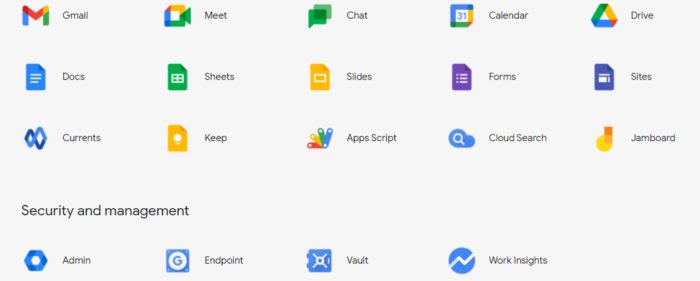
I don’t know where I would be without the full line of Gmail products. There used to be a time when we’d create pieces of content in Word platform, download it, and then attach it to an email and send it off.
The next person would mark it up with notes and adjustments, send it back, and the process would start over.
Thankfully, those days are long gone.
With Google Docs and Sheets, you can share documents in real-time and actually mark them up with the writer looking at them so you can see what they’re doing. There’s a chat feature and a suggestion area, too where you can ask questions and provide responses as to why a certain adjustment was made.
There’s a level of security and protection here, as well. Different permission levels ranging from “view” to “edit” give you complete control over your documents. If you’re sending a document off as a reference to something, you might not want that person to make any changes to it without making a copy for themselves, the Gmail Suite of products can do that.
Plus, everything syncs with your Google Calendar. If you’re talking in an email about setting up a call in three days, you can instantly set that appointment on your calendar and you’ll receive reminders across all your devices.
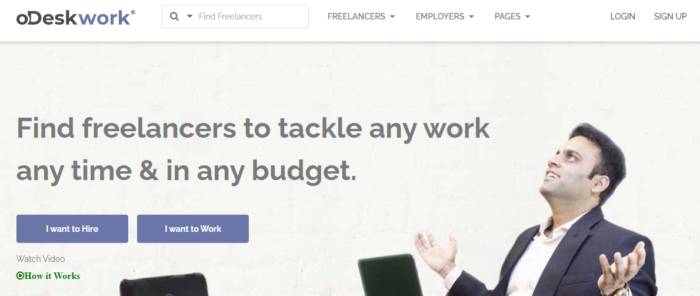
oDeskWork is a freelancer platform that connects you with the right virtual assistant or freelancer to support your business. At some point, every business needs to start hiring. No matter what business you’re in, to grow and scale, you need a support system because you can’t do everything.
This is where digital marketing tools like oDeskWork come into play. You can upload current projects that you need completed, browse profiles, and start communicating with potential candidates.
The platform also offers payment protection, so you ensure you get the services you anticipated. Payments are only released to the freelancer when you’re satisfied with the work they completed.
oDeskWork has experts and freelancers in all different kinds of niches including digital marketing, virtual assisting, transcribing, proofreading, writing, editing, SEO, WordPress, and more.
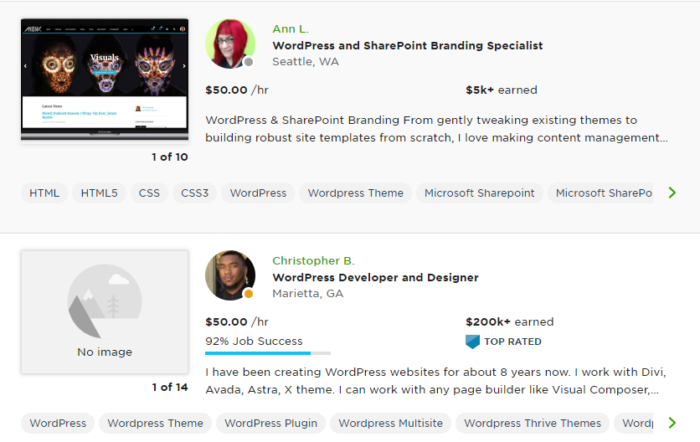
Upwork is a freelancer platform that connects you with qualified candidates who can help your business grow, making it a must-have digital marketing tool. What I like most about Upwork is the transparency you get and the fact that you can see all types of work that the freelancers have completed.
For example, if you’re browsing for someone to build you a WordPress website, you wouldn’t hire someone without first seeing what type of work they do, right?
The platform will show you examples of their work, their job success rating, a description of their skills, their rate per hour, as well as any badges they’ve earned for continuous performance.
When you’re searching for tools for digital marketing agencies, the last thing you need is to waste time with people who can’t deliver. Upwork ensures that doesn’t happen with their escrow protection as well. None of the money you pay for a job will be released until you are happy with it.
I also find that Upwork is a great place to find long-term working relationships with freelancers that you can use on an ongoing basis versus a one-off job.

I like to think of Fiverr as Upwork’s little brother. When you’re looking to create long-term working relationships and hire someone who can really provide you with a premium service, you should turn to Upwork.
Sometimes though, you’re just looking for a quick job that someone can turn around fast for an affordable price. For example, if you need someone to do up a quick logo for an affiliate site for five dollars, Fiverr is the way to go.
One thing I really like about Fiverr is you can quickly sift through freelancers using the search feature. Type in the service you’re interested in, and you’ll find information such as overall rating and average starting cost.
Fiverr also provides certain freelancers with titles like “top-rated seller” and “level 2 seller.” These will help you determine what level of experience you’re looking for in the job you need to be completed. The best digital marketing tools offer this kind of trust.
This tool is best for one-off jobs that are lower budget and not as difficult, but I wouldn’t recommend hiring off Fiverr for anything too involved such as link building or content creation.
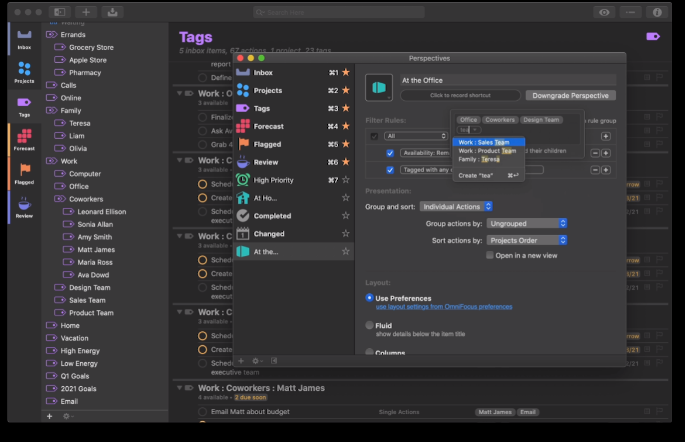
Need to stay on task? This digital marketing tool can help.
OmniFocus is a task management tool that helps you manage all your operations in one place. You can keep track of everything that’s going on all from your browser or mobile device.
You can tag certain projects, assign them to the individual you want to complete them, and set due dates so you can lay out your week in the most productive way possible. As work comes in, you can assign support workers to handle the task and close it out when it’s complete.
One of my favorite things about OmniFocus is the forecast feature where you can get an overall snapshot of what you have coming up in the future including recurring tasks that might only happen once per quarter, bi-annually, or even every few years. This ensures that no one forgets anything.
The main downside is that this tool is only available for Apple users at this point. For all the Windows and Android people out there, you’ll have to go with something else like Trello or ClickUp for now.

We all know Zoom as the video conferencing software used to bring people together no matter where they are on the planet. We’re all facing our own unique remote working situation but we still need to connect sometimes and Zoom allows that to happen. The best digital marketing tools help bring businesses together.
You can share your screen, draw on the screen, record meetings, and invite others to join in as well. Zoom offers free video conferencing for up to 100 participants for up to 40 minutes.
If you’re holding a one-on-one meeting that runs longer than 40 minutes, I’ve found in the past that Zoom will often extend the meeting for free with no time limit.
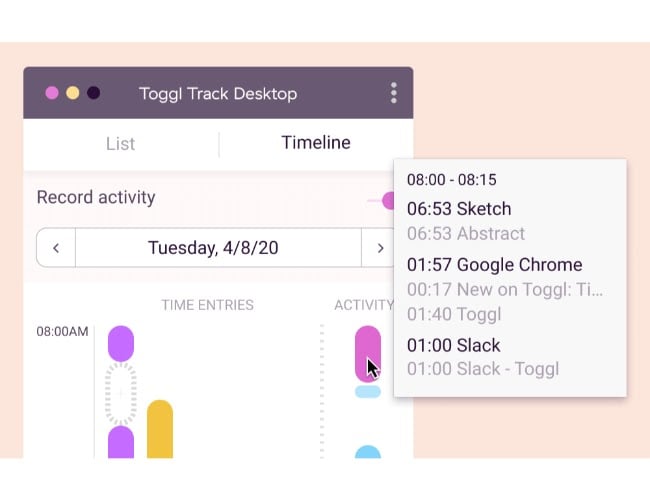
Toggl helps bring this list of digital marketing tools together. For all the work you’re doing, freelancers you’re managing, and documents you’re sharing; you need to have an idea of how long everything takes.
This tool does that with time tracking, reporting, and project planning. You can use Toggl to get an accurate representation of how long a task or project will take so you can know how many resources you need to allot for next time.
Toggl offers a few different tools for time tracking, project planning, and candidate-screening so it’s an all-inclusive tool for businesses that manage a remote team.
Conclusion
Starting or growing a business isn’t easy, but it doesn’t have to be overwhelming, either.
The first step is to create a strong digital marketing strategy–one that incorporates social media marketing, search engine optimization, email marketing, and consistent, valuable content that truly speaks to your audience.
Ensuring your business succeeds means using the right digital marketing tools at the right time. It’s my hope that this list will help you in your digital marketing efforts and bring you the success you seek.
Would you add any other tools to this list? Did you use any of these as you launched your small business? Share your thoughts in the comment section below.
- SEO – unlock massive amounts of SEO traffic. See real results.
- Content Marketing – our team creates epic content that will get shared, get links, and attract traffic.
- Paid Media – effective paid strategies with clear ROI.
MARKETING
Should Your Brand Shout Its AI and Marketing Plan to the World?

To use AI or not to use AI, that is the question.
Let’s hope things work out better for you than they did for Shakespeare’s mad Danish prince with daddy issues.
But let’s add a twist to that existential question.
CMI’s chief strategy officer, Robert Rose, shares what marketers should really contemplate. Watch the video or read on to discover what he says:
Should you not use AI and be proud of not using it? Dove Beauty did that last week.
Should you use it but keep it a secret? Sports Illustrated did that last year.
Should you use AI and be vocal about using it? Agency giant Brandtech Group picked up the all-in vibe.
Should you not use it but tell everybody you are? The new term “AI washing” is hitting everywhere.
What’s the best option? Let’s explore.
Dove tells all it won’t use AI
Last week, Dove, the beauty brand celebrating 20 years of its Campaign for Real Beauty, pledged it would NEVER use AI in visual communication to portray real people.
In the announcement, they said they will create “Real Beauty Prompt Guidelines” that people can use to create images representing all types of physical beauty through popular generative AI programs. The prompt they picked for the launch video? “The most beautiful woman in the world, according to Dove.”
I applaud them for the powerful ad. But I’m perplexed by Dove issuing a statement saying it won’t use AI for images of real beauty and then sharing a branded prompt for doing exactly that. Isn’t it like me saying, “Don’t think of a parrot eating pizza. Don’t think about a parrot eating pizza,” and you can’t help but think about a parrot eating pizza right now?
Brandtech Group says it’s all in on AI
Now, Brandtech Group, a conglomerate ad agency, is going the other way. It’s going all-in on AI and telling everybody.
This week, Ad Age featured a press release — oops, I mean an article (subscription required) — with the details of how Brandtech is leaning into the takeaway from OpenAI’s Sam Altman, who says 95% of marketing work today can be done by AI.
A Brandtech representative talked about how they pitch big brands with two people instead of 20. They boast about how proud they are that its lean 7,000 staffers compete with 100,000-person teams. (To be clear, showing up to a pitch with 20 people has never been a good thing, but I digress.)
OK, that’s a differentiated approach. They’re all in. Ad Age certainly seemed to like it enough to promote it. Oops, I mean report about it.
False claims of using AI and not using AI
Offshoots of the all-in and never-will approaches also exist.
The term “AI washing” is de rigueur to describe companies claiming to use AI for something that really isn’t AI. The US Securities and Exchange Commission just fined two companies for using misleading statements about their use of AI in their business model. I know one startup technology organization faced so much pressure from their board and investors to “do something with AI” that they put a simple chatbot on their website — a glorified search engine — while they figured out what they wanted to do.
Lastly and perhaps most interestingly, companies have and will use AI for much of what they create but remain quiet about it or desire to keep it a secret. A recent notable example is the deepfake ad of a woman in a car professing the need for people to use a particular body wipe to get rid of body odor. It was purported to be real, but sharp-eyed viewers suspected the fake and called out the company, which then admitted it. Or was that the brand’s intent all along — the AI-use outrage would bring more attention?
This is an AI generated influencer video.
Looks 100% real. Even the interior car detailing.
UGC content for your brand is about to get really cheap. ☠️ pic.twitter.com/2m10RqoOW3
— Jon Elder | Amazon Growth | Private Label (@BlackLabelAdvsr) March 26, 2024
To yell or not to yell about your brand’s AI decision
Should a brand yell from a mountaintop that they use AI to differentiate themselves a la Brandtech? Or should a brand yell they’re never going to use AI to differentiate themselves a la Dove? Or should a brand use it and not yell anything? (I think it’s clear that a brand should not use AI and lie and say it is. That’s the worst of all choices.)
I lean far into not-yelling-from-mountaintop camp.
When I see a CEO proudly exclaim that they laid off 90% of their support workforce because of AI, I’m not surprised a little later when the value of their service is reduced, and the business is failing.
I’m not surprised when I hear “AI made us do it” to rationalize the latest big tech company latest rounds of layoffs. Or when a big consulting firm announces it’s going all-in on using AI to replace its creative and strategic resources.
I see all those things as desperate attempts for short-term attention or a distraction from the real challenge. They may get responses like, “Of course, you had to lay all those people off; AI is so disruptive,” or “Amazing. You’re so out in front of the rest of the pack by leveraging AI to create efficiency, let me cover your story.” Perhaps they get this response, “Your company deserves a bump in stock price because you’re already using this fancy new technology.”
But what happens if the AI doesn’t deliver as promoted? What happens the next time you need to lay off people? What happens the next time you need to prove your technologically forward-leaning?
Yelling out that you’re all in on a disruptive innovation, especially one the public doesn’t yet trust a lot is (at best) a business sugar high. That short-term burst of attention may or may not foul your long-term brand value.
Interestingly, the same scenarios can manifest when your brand proclaims loudly it is all out of AI, as Dove did. The sugar high may not last and now Dove has itself into a messaging box. One slip could cause distrust among its customers. And what if AI gets good at demonstrating diversity in beauty?
I tried Dove’s instructions and prompted ChatGPT for a picture of “the most beautiful woman in the world according to the Dove Real Beauty ad.”
It gave me this. Then this. And this. And finally, this.
She’s absolutely beautiful, but she doesn’t capture the many facets of diversity Dove has demonstrated in its Real Beauty campaigns. To be clear, Dove doesn’t have any control over generating the image. Maybe the prompt worked well for Dove, but it didn’t for me. Neither Dove nor you can know how the AI tool will behave.
To use AI or not to use AI?
When brands grab a microphone to answer that question, they work from an existential fear about the disruption’s meaning. They do not exhibit the confidence in their actions to deal with it.
Let’s return to Hamlet’s soliloquy:
Thus conscience doth make cowards of us all;
And thus the native hue of resolution
Is sicklied o’er with the pale cast of thought,
And enterprises of great pith and moment
With this regard their currents turn awry
And lose the name of action.
In other words, Hamlet says everybody is afraid to take real action because they fear the unknown outcome. You could act to mitigate or solve some challenges, but you don’t because you don’t trust yourself.
If I’m a brand marketer for any business (and I am), I’m going to take action on AI for my business. But until I see how I’m going to generate value with AI, I’m going to be circumspect about yelling or proselytizing how my business’ future is better.
HANDPICKED RELATED CONTENT:
Cover image by Joseph Kalinowski/Content Marketing Institute
MARKETING
How to Use AI For a More Effective Social Media Strategy, According to Ross Simmonds

Welcome to Creator Columns, where we bring expert HubSpot Creator voices to the Blogs that inspire and help you grow better.
It’s the age of AI, and our job as marketers is to keep up.
My team at Foundation Marketing recently conducted an AI Marketing study surveying hundreds of marketers, and more than 84% of all leaders, managers, SEO experts, and specialists confirmed that they used AI in the workplace.

If you can overlook the fear-inducing headlines, this technology is making social media marketers more efficient and effective than ever. Translation: AI is good news for social media marketers.
In fact, I predict that the marketers not using AI in their workplace will be using it before the end of this year, and that number will move closer and closer to 100%.
Social media and AI are two of the most revolutionizing technologies of the last few decades. Social media has changed the way we live, and AI is changing the way we work.
So, I’m going to condense and share the data, research, tools, and strategies that the Foundation Marketing Team and I have been working on over the last year to help you better wield the collective power of AI and social media.
Let’s jump into it.
What’s the role of AI in social marketing strategy?
In a recent episode of my podcast, Create Like The Greats, we dove into some fascinating findings about the impact of AI on marketers and social media professionals. Take a listen here:
Let’s dive a bit deeper into the benefits of this technology:
Benefits of AI in Social Media Strategy
AI is to social media what a conductor is to an orchestra — it brings everything together with precision and purpose. The applications of AI in a social media strategy are vast, but the virtuosos are few who can wield its potential to its fullest.
AI to Conduct Customer Research
Imagine you’re a modern-day Indiana Jones, not dodging boulders or battling snakes, but rather navigating the vast, wild terrain of consumer preferences, trends, and feedback.
This is where AI thrives.
Using social media data, from posts on X to comments and shares, AI can take this information and turn it into insights surrounding your business and industry. Let’s say for example you’re a business that has 2,000 customer reviews on Google, Yelp, or a software review site like Capterra.
Leveraging AI you can now have all 2,000 of these customer reviews analyzed and summarized into an insightful report in a matter of minutes. You simply need to download all of them into a doc and then upload them to your favorite Generative Pre-trained Transformer (GPT) to get the insights and data you need.
But that’s not all.
You can become a Prompt Engineer and write ChatGPT asking it to help you better understand your audience. For example, if you’re trying to come up with a persona for people who enjoy marathons but also love kombucha you could write a prompt like this to ChatGPT:

The response that ChatGPT provided back is quite good:

Below this it went even deeper by including a lot of valuable customer research data:
- Demographics
- Psychographics
- Consumer behaviors
- Needs and preferences
And best of all…
It also included marketing recommendations.
The power of AI is unbelievable.
Social Media Content Using AI
AI’s helping hand can be unburdening for the creative spirit.
Instead of marketers having to come up with new copy every single month for posts, AI Social Caption generators are making it easier than ever to craft catchy status updates in the matter of seconds.
Tools like HubSpot make it as easy as clicking a button and telling the AI tool what you’re looking to create a post about:

The best part of these AI tools is that they’re not limited to one channel.
Your AI social media content assistant can help you with LinkedIn content, X content, Facebook content, and even the captions that support your post on Instagram.
It can also help you navigate hashtags:

With AI social media tools that generate content ideas or even write posts, it’s not about robots replacing humans. It’s about making sure that the human creators on your team are focused on what really matters — adding that irreplaceable human touch.
Enhanced Personalization
You know that feeling when a brand gets you, like, really gets you?
AI makes that possible through targeted content that’s tailored with a level of personalization you’d think was fortune-telling if the data didn’t paint a starker, more rational picture.
What do I mean?
Brands can engage more quickly with AI than ever before. In the early 2000s, a lot of brands spent millions of dollars to create social media listening rooms where they would hire social media managers to find and engage with any conversation happening online.
Thanks to AI, brands now have the ability to do this at scale with much fewer people all while still delivering quality engagement with the recipient.
Analytics and Insights
Tapping into AI to dissect the data gives you a CSI-like precision to figure out what works, what doesn’t, and what makes your audience tick. It’s the difference between guessing and knowing.
The best part about AI is that it can give you almost any expert at your fingertips.
If you run a report surrounding the results of your social media content strategy directly from a site like LinkedIn, AI can review the top posts you’ve shared and give you clear feedback on what type of content is performing, why you should create more of it, and what days of the week your content is performing best.
This type of insight that would typically take hours to understand.
Now …
Thanks to the power of AI you can upload a spreadsheet filled with rows and columns of data just to be met with a handful of valuable insights a few minutes later.
Improved Customer Service
Want 24/7 support for your customers?
It’s now possible without human touch.
Chatbots powered by AI are taking the lead on direct messaging experiences for brands on Facebook and other Meta properties to offer round-the-clock assistance.
The fact that AI can be trained on past customer queries and data to inform future queries and problems is a powerful development for social media managers.
Advertising on Social Media with AI
The majority of ad networks have used some variation of AI to manage their bidding system for years. Now, thanks to AI and its ability to be incorporated in more tools, brands are now able to use AI to create better and more interesting ad campaigns than ever before.
Brands can use AI to create images using tools like Midjourney and DALL-E in seconds.
Brands can use AI to create better copy for their social media ads.
Brands can use AI tools to support their bidding strategies.
The power of AI and social media is continuing to evolve daily and it’s not exclusively found in the organic side of the coin. Paid media on social media is being shaken up due to AI just the same.
How to Implement AI into Your Social Media Strategy
Ready to hit “Go” on your AI-powered social media revolution?
Don’t just start the engine and hope for the best. Remember the importance of building a strategy first. In this video, you can learn some of the most important factors ranging from (but not limited to) SMART goals and leveraging influencers in your day-to-day work:
The following seven steps are crucial to building a social media strategy:
- Identify Your AI and Social Media Goals
- Validate Your AI-Related Assumptions
- Conduct Persona and Audience Research
- Select the Right Social Channels
- Identify Key Metrics and KPIs
- Choose the Right AI Tools
- Evaluate and Refine Your Social Media and AI Strategy
Keep reading, roll up your sleeves, and follow this roadmap:
1. Identify Your AI and Social Media Goals
If you’re just dipping your toes into the AI sea, start by defining clear objectives.
Is it to boost engagement? Streamline your content creation? Or simply understand your audience better? It’s important that you spend time understanding what you want to achieve.
For example, say you’re a content marketing agency like Foundation and you’re trying to increase your presence on LinkedIn. The specificity of this goal will help you understand the initiatives you want to achieve and determine which AI tools could help you make that happen.
Are there AI tools that will help you create content more efficiently? Are there AI tools that will help you optimize LinkedIn Ads? Are there AI tools that can help with content repurposing? All of these things are possible and having a goal clearly identified will help maximize the impact. Learn more in this Foundation Marketing piece on incorporating AI into your content workflow.
Once you have identified your goals, it’s time to get your team on board and assess what tools are available in the market.
Recommended Resources:
2. Validate Your AI-Related Assumptions
Assumptions are dangerous — especially when it comes to implementing new tech.
Don’t assume AI is going to fix all your problems.
Instead, start with small experiments and track their progress carefully.
3. Conduct Persona and Audience Research
Social media isn’t something that you can just jump into.
You need to understand your audience and ideal customers. AI can help with this, but you’ll need to be familiar with best practices. If you need a primer, this will help:
Once you understand the basics, consider ways in which AI can augment your approach.
4. Select the Right Social Channels
Not every social media channel is the same.
It’s important that you understand what channel is right for you and embrace it.
The way you use AI for X is going to be different from the way you use AI for LinkedIn. On X, you might use AI to help you develop a long-form thread that is filled with facts and figures. On LinkedIn however, you might use AI to repurpose a blog post and turn it into a carousel PDF. The content that works on X and that AI can facilitate creating is different from the content that you can create and use on LinkedIn.
The audiences are different.
The content formats are different.
So operate and create a plan accordingly.
Recommended Tools and Resources:
5. Identify Key Metrics and KPIs
What metrics are you trying to influence the most?
Spend time understanding the social media metrics that matter to your business and make sure that they’re prioritized as you think about the ways in which you use AI.
These are a few that matter most:
- Reach: Post reach signifies the count of unique users who viewed your post. How much of your content truly makes its way to users’ feeds?
- Clicks: This refers to the number of clicks on your content or account. Monitoring clicks per campaign is crucial for grasping what sparks curiosity or motivates people to make a purchase.
- Engagement: The total social interactions divided by the number of impressions. This metric reveals how effectively your audience perceives you and their readiness to engage.
Of course, it’s going to depend greatly on your business.
But with this information, you can ensure that your AI social media strategy is rooted in goals.
6. Choose the Right AI Tools
The AI landscape is filled with trash and treasure.
Pick AI tools that are most likely to align with your needs and your level of tech-savviness.
For example, if you’re a blogger creating content about pizza recipes, you can use HubSpot’s AI social caption generator to write the message on your behalf:

The benefit of an AI tool like HubSpot and the caption generator is that what at one point took 30-40 minutes to come up with — you can now have it at your fingertips in seconds. The HubSpot AI caption generator is trained on tons of data around social media content and makes it easy for you to get inspiration or final drafts on what can be used to create great content.
Consider your budget, the learning curve, and what kind of support the tool offers.
7. Evaluate and Refine Your Social Media and AI Strategy
AI isn’t a magic wand; it’s a set of complex tools and technology.
You need to be willing to pivot as things come to fruition.
If you notice that a certain activity is falling flat, consider how AI can support that process.
Did you notice that your engagement isn’t where you want it to be? Consider using an AI tool to assist with crafting more engaging social media posts.
Make AI Work for You — Now and in the Future
AI has the power to revolutionize your social media strategy in ways you may have never thought possible. With its ability to conduct customer research, create personalized content, and so much more, thinking about the future of social media is fascinating.
We’re going through one of the most interesting times in history.
Stay equipped to ride the way of AI and ensure that you’re embracing the best practices outlined in this piece to get the most out of the technology.
MARKETING
Advertising in local markets: A playbook for success

Many brands, such as those in the home services industry or a local grocery chain, market to specific locations, cities or regions. There are also national brands that want to expand in specific local markets.
Regardless of the company or purpose, advertising on a local scale has different tactics than on a national scale. Brands need to connect their messaging directly with the specific communities they serve and media to their target demo. Here’s a playbook to help your company succeed when marketing on a local scale.
1. Understand local vs. national campaigns
Local advertising differs from national campaigns in several ways:
- Audience specificity: By zooming in on precise geographic areas, brands can tailor messaging to align with local communities’ customs, preferences and nuances. This precision targeting ensures that your message resonates with the right target audience.
- Budget friendliness: Local advertising is often more accessible for small businesses. Local campaign costs are lower, enabling brands to invest strategically within targeted locales. This budget-friendly nature does not diminish the need for strategic planning; instead, it emphasizes allocating resources wisely to maximize returns. As a result, testing budgets can be allocated across multiple markets to maximize learnings for further market expansion.
- Channel selection: Selecting the correct channels is vital for effective local advertising. Local newspapers, radio stations, digital platforms and community events each offer advantages. The key lies in understanding where your target audience spends time and focusing efforts to ensure optimal engagement.
- Flexibility and agility: Local campaigns can be adjusted more swiftly in response to market feedback or changes, allowing brands to stay relevant and responsive.
Maintaining brand consistency across local touchpoints reinforces brand identity and builds a strong, recognizable brand across markets.
2. Leverage customized audience segmentation
Customized audience segmentation is the process of dividing a market into distinct groups based on specific demographic criteria. This marketing segmentation supports the development of targeted messaging and media plans for local markets.
For example, a coffee chain might cater to two distinct segments: young professionals and retirees. After identifying these segments, the chain can craft messages, offers and media strategies relating to each group’s preferences and lifestyle.
To reach young professionals in downtown areas, the chain might focus on convenience, quality coffee and a vibrant atmosphere that is conducive to work and socializing. Targeted advertising on Facebook, Instagram or Connected TV, along with digital signage near office complexes, could capture the attention of this demographic, emphasizing quick service and premium blends.
Conversely, for retirees in residential areas, the chain could highlight a cozy ambiance, friendly service and promotions such as senior discounts. Advertisements in local print publications, community newsletters, radio stations and events like senior coffee mornings would foster a sense of community and belonging.
Dig deeper: Niche advertising: 7 actionable tactics for targeted marketing
3. Adapt to local market dynamics
Various factors influence local market dynamics. Brands that navigate changes effectively maintain a strong audience connection and stay ahead in the market. Here’s how consumer sentiment and behavior may evolve within a local market and the corresponding adjustments brands can make.
- Cultural shifts, such as changes in demographics or societal norms, can alter consumer preferences within a local community. For example, a neighborhood experiencing gentrification may see demand rise for specific products or services.
- Respond by updating your messaging to reflect the evolving cultural landscape, ensuring it resonates with the new demographic profile.
- Economic conditions are crucial. For example, during downturns, consumers often prioritize value and practicality.
- Highlight affordable options or emphasize the practical benefits of your offerings to ensure messaging aligns with consumers’ financial priorities. The impact is unique to each market and the marketing message must also be dynamic.
- Seasonal trends impact consumer behavior.
- Align your promotions and creative content with changing seasons or local events to make your offerings timely and relevant.
- New competitors. The competitive landscape demands vigilance because new entrants or innovative competitor campaigns can shift consumer preferences.
- Differentiate by focusing on your unique selling propositions, such as quality, customer service or community involvement, to retain consumer interest and loyalty.
4. Apply data and predictive analytics
Data and predictive analytics are indispensable tools for successfully reaching local target markets. These technologies provide consumer behavior insights, enabling you to anticipate market trends and adjust strategies proactively.
- Price optimization: By analyzing consumer demand, competitor pricing and market conditions, data analytics enables you to set prices that attract customers while ensuring profitability.
- Competitor analysis: Through analysis, brands can understand their positioning within the local market landscape and identify opportunities and threats. Predictive analytics offer foresight into competitors’ potential moves, allowing you to strategize effectively to maintain a competitive edge.
- Consumer behavior: Forecasting consumer behavior allows your brand to tailor offerings and marketing messages to meet evolving consumer needs and enhance engagement.
- Marketing effectiveness: Analytics track the success of advertising campaigns, providing insights into which strategies drive conversions and sales. This feedback loop enables continuous optimization of marketing efforts for maximum impact.
- Inventory management: In supply chain management, data analytics predict demand fluctuations, ensuring inventory levels align with market needs. This efficiency prevents stockouts or excess inventory, optimizing operational costs and meeting consumer expectations.
Dig deeper: Why you should add predictive modeling to your marketing mix
5. Counter external market influences
Consider a clothing retailer preparing for a spring collection launch. By analyzing historical weather data and using predictive analytics, the brand forecasts an unseasonably cool start to spring. Anticipating this, the retailer adjusts its campaign to highlight transitional pieces suitable for cooler weather, ensuring relevance despite an unexpected chill.
Simultaneously, predictive models signal an upcoming spike in local media advertising rates due to increased market demand. Retailers respond by reallocating a portion of advertising budgets to digital channels, which offer more flexibility and lower costs than traditional media. This shift enables brands to maintain visibility and engagement without exceeding budget, mitigating the impact of external forces on advertising.
6. Build consumer confidence with messaging
Localized messaging and tailored customer service enhance consumer confidence by demonstrating your brand’s understanding of the community. For instance, a grocery store that curates cooking classes featuring local cuisine or sponsors community events shows commitment to local culture and consumer interests.
Similarly, a bookstore highlighting local authors or topics relevant to the community resonates with local customers. Additionally, providing service that addresses local needs — such as bilingual service and local event support — reinforces the brand’s values and response to the community.
Through these localized approaches, brands can build trust and loyalty, bridging the gap between corporate presence and local relevance.
7. Dominate with local advertising
To dominate local markets, brands must:
- Harness hyper-targeted segmentation and geo-targeted advertising to reach and engage precise audiences.
- Create localized content that reflects community values, engage in community events, optimize campaigns for mobile and track results.
- Fine-tune strategies, outperform competitors and foster lasting relationships with customers.
These strategies will enable your message to resonate with local consumers, differentiate you in competitive markets and ensure you become a major player in your specific area.
Dig deeper: The 5 critical elements for local marketing success
Opinions expressed in this article are those of the guest author and not necessarily MarTech. Staff authors are listed here.
-

 PPC5 days ago
PPC5 days ago19 Best SEO Tools in 2024 (For Every Use Case)
-

 MARKETING7 days ago
MARKETING7 days agoStreamlining Processes for Increased Efficiency and Results
-
SEARCHENGINES6 days ago
Daily Search Forum Recap: April 17, 2024
-

 PPC7 days ago
PPC7 days ago97 Marvelous May Content Ideas for Blog Posts, Videos, & More
-

 SEO6 days ago
SEO6 days agoAn In-Depth Guide And Best Practices For Mobile SEO
-

 MARKETING6 days ago
MARKETING6 days agoEcommerce evolution: Blurring the lines between B2B and B2C
-
SEARCHENGINES5 days ago
Daily Search Forum Recap: April 18, 2024
-
SEARCHENGINES4 days ago
Daily Search Forum Recap: April 19, 2024














![How to Use AI For a More Effective Social Media Strategy, According to Ross Simmonds Download Now: The 2024 State of Social Media Trends [Free Report]](https://articles.entireweb.com/wp-content/uploads/2024/04/How-to-Use-AI-For-a-More-Effective-Social-Media.png)


